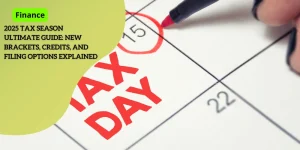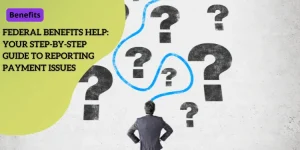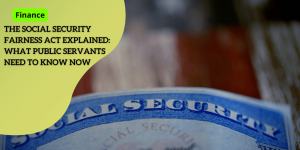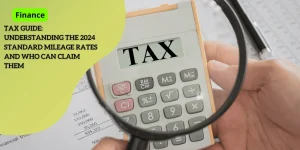Understanding Your Government Check: A Step-by-Step Guide to Payment Verification
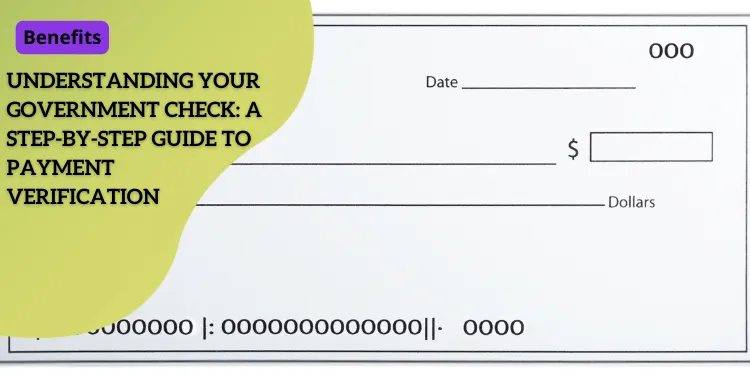
Anúncios
Understanding government checks can seem complex, but it’s essential to grasp the different types of payments and checks issued by various agencies.
This chapter aims to break down the fundamental concepts to help you navigate these payments confidently.
Anúncios
Understanding Different Types of Government Payments and Checks
Government payments can come in various forms depending on their purpose.
Some of the most common types include:
Anúncios
- Social Security Payments: Monthly benefits for retirees, disabled individuals, and their families.
- Tax Refunds: Payments made by the IRS to those who overpaid their taxes.
- Stimulus Checks: Economic impact payments issued by the federal government to stimulate the economy during downturns.
- Veterans Benefits: Compensations and pensions for veterans and their families.
- Unemployment Benefits: Temporary payments to individuals who lose their jobs.
Each type of payment fulfills a specific need and is disbursed by a corresponding agency.
Recognizing these can help you identify the nature of the payment you receive.
Identifying Legitimate Government Checks and Payments
With various types of government payments floating around, it’s crucial to identify legitimate government checks.
Here are some pointers:
- Check the Issuing Agency: Look for the name of the issuing agency in the memo area or “issue type” section of the check.
- Call for Verification: If you’re unsure about the issuer, contact the Bureau of the Fiscal Service Call Center at 1-855-868-0151 to verify the check’s authenticity.
- Examine the Details: Legitimate government checks will always include essential details like your name, address, and the purpose of the payment.
By ensuring these elements, you can significantly reduce the risk of falling victim to counterfeit checks.
Importance of Proper Handling of Government Payments
Handling government payments correctly is vital for several reasons:
- Avoiding Fraud: By verifying and properly managing your checks, you protect yourself from fraud.
- Ensuring Timely Deposits: Proper handling ensures that your payments are deposited timely, helping you meet your financial obligations without hiccups.
- Maintaining Records: Keeping accurate records of your payments aids in resolving any disputes or issues with the issuing agencies.
Understanding these aspects not only safeguards you from potential pitfalls but also promotes a smooth financial experience with government payments.
Next, we will delve into the steps to verify your government check, providing a clear path to ensuring its authenticity.
Verifying Your Government Check
Locating the Issuing Agency
When you receive a government check, the first step in verifying its authenticity is to locate the issuing agency.
This information can usually be found in the memo area or the ‘issue type’ section of the check.
These sections provide essential details, such as the reason for the payment and the agency that authorized it.
By carefully examining these areas, you can ascertain whether the check is legitimate.
If you’re unsure about which agency issued the payment, don’t hesitate to seek assistance.
Contacting the issuing agency directly can help clarify the purpose of the check.
Most agencies have dedicated customer service departments that can provide further information.
Contacting the Bureau of the Fiscal Service Call Center
If the issuing agency is not clear or you have other concerns about the check’s legitimacy, contacting the Bureau of the Fiscal Service Call Center is a prudent step.
The call center can be reached at 1-855-868-0151.
They offer support in identifying and verifying the details of your government check.
When you call, be prepared to provide information about the check, such as:
- Check number
- Date of issuance
- Amount
- Issuing agency details from the memo or ‘issue type’ section
This information will help the call center staff accurately verify your check and guide you on the next steps if there are any issues.
Checking Payment Authenticity and Authorization
It’s crucial to confirm that the payment you have received is both authentic and authorized.
Fraudulent activities involving government checks can occur, and it’s essential to be vigilant.
Here are a few tips to ensure the check is genuine:
- Examine the Check’s Physical Features: Look for security features such as watermarks, microprinting, and color-shifting ink. These features are typically used to prevent counterfeiting.
- Cross-Check Details with the Issuing Agency: Use the information in the memo or ‘issue type’ section to contact the issuing agency. You can verify that they indeed issued a check in your name for the specified amount.
- Consult the Bureau of the Fiscal Service: They can provide an additional layer of verification. Even if the check appears legitimate, getting confirmation from a central fiscal authority ensures you’re not missing any critical signs of fraud.
By taking these steps, you can confidently verify that your government check is legitimate.
This verification process not only protects you from fraud but also ensures that you handle your government payments properly.
It is always better to be cautious and thorough with these checks.
For those dealing with issues related to government payments, the next chapter will discuss how to report problems with government checks, providing a comprehensive guide to navigating this process seamlessly.
Reporting Problems with Government Payments
If you encounter issues with a government check, such as it being lost, missing, stolen, or expired, it’s essential to report it promptly.
Here’s a step-by-step guide to navigate through these situations efficiently.
Steps to Report Lost, Missing, Stolen, or Expired Federal Checks
Reporting is straightforward but must be done correctly and promptly to ensure that your issue is addressed swiftly:
- Identify the Issuing Agency: First, identify which agency issued your check. This information is typically found in the memo area or ‘issue type’ section of the check. If you can’t find it, proceed to the next step.
- Use the A-Z Index of U.S. Government Departments and Agencies: The U.S. Government provides an extensive index of its departments and agencies. This resource can help you locate the appropriate contact information for the agency that issued your check.
- Contact the Issuing Agency: Report your problem directly to the specified agency. Provide detailed information such as the check number, date, and amount to facilitate the verification and replacement process.
Using the A-Z Index of U.S. Government Departments and Agencies
The A-Z Index is an invaluable resource when dealing with federal payments. To use it:
- Access the Index: Visit the A-Z Index of U.S. Government Departments and Agencies.
- Search for the Agency: Enter the name or acronym of the agency that issued your check.
- Find Contact Information: Locate the contact details, including phone numbers and email addresses, to report your lost, missing, stolen, or expired check.
Contacting the Appropriate Issuing Agency
Once you have identified and located the agency, it’s time to make contact:
- Gather Information: Ensure you have all pertinent details about your check, such as the check number, amount, date, and any notes or memo on the check.
- Initiate Contact: Use the contact information obtained from the A-Z Index. Call, email, or use the agency’s designated contact form to report your issue.
- Follow Instructions: The agency will provide instructions on the next steps, which may include sending a written request or completing a specific form.
Handling problems with government payments might seem daunting, but by following these steps, you can resolve issues more effectively and get your payment concerns addressed promptly.
Transitioning from reporting issues, it’s also crucial to know how to make payments to the federal government, ensuring all transactions are handled smoothly and correctly.
Making Payments to the Federal Government
Using Pay.gov for Payments from Checking or Savings Accounts
Paying the federal government can be a straightforward process with the help of Pay.gov, an online portal designed to facilitate secure and efficient transactions.
To make a payment, you’ll need to follow a few easy steps:
- Visit Pay.gov: Navigate to Pay.gov and create an account if you don’t already have one.
- Select Payment Option: Choose the type of payment you need to make. This can include anything from taxes to federal fines or loans.
- Provide Payment Information: Input your checking or savings account details. Ensure accuracy to avoid failed transactions or delays.
- Confirm and Submit: Review all entered information to make sure it’s correct, then submit your payment.
Using Pay.gov simplifies the payment process and provides a secure way to handle financial transactions with the federal government.
Accessing Payment Forms and Documentation
To ensure you have all necessary documentation and forms for your payment, follow these steps:
- Locate Required Forms: On Pay.gov, you can search for specific forms needed for your payment type. Each form will guide you through the required information.
- Complete and Submit Forms: Fill out and submit the forms online. Most forms will allow for digital signatures, streamlining the process.
- Download Confirmation: After submission, Pay.gov typically provides a confirmation receipt that you can download and save for your records.
Having the correct forms and maintaining personal copies of your transactions helps prevent errors and provides a reference in case of discrepancies.
Understanding Payment Status and Refund Inquiries
After you’ve made a payment, it’s important to track its status and know how to handle potential refunds:
- Check Status Online: Log in to your Pay.gov account to monitor the status of your payment. Updates are usually provided in real-time.
- Contact Support: For questions, you can reach out to Pay.gov customer service through their online portal or contact information provided on the website.
- Resolve Refunds: If you are eligible for a refund or have inquiries about money owed, follow the guidelines on Pay.gov. They provide instructions and contact options to facilitate these processes effectively.
By using Pay.gov for your federal payments, you can ensure secure, efficient, and trackable transactions.
This system also offers support resources to address any issues with your payments, providing peace of mind and clarity.
Getting Additional Assistance
Government-issued payments can sometimes be confusing, and you might need additional help.
Knowing where to find assistance can make a big difference in resolving any issues and getting the support you need.
Resources for Checking Application or Case Status
It’s not uncommon to wonder about the status of your application or case with a government agency.
Fortunately, many government agencies provide resources to help you track this information.
Here are some steps you can take:
- Visit the Agency’s Website: Most U.S. government departments and agencies have sections on their websites dedicated to tracking the status of applications or cases. Look for links labeled ‘Check Status’ or ‘Track Your Application.’
- Contact the Agency Directly: If you require more detailed information, you can call the agency’s customer service line. The A-Z Index of U.S. Government Departments and Agencies is a helpful resource for finding contact details.
- Use Online Portals: Some agencies offer online accounts or portals where you can log in and view updates on your case. Creating an account is often a quick way to get real-time information.
Accessing Help with Payment-Related Questions
If you have specific questions about a government payment, there are multiple ways to get assistance:
- Start with Pay.gov: This helpful website allows you to make payments to the federal government directly from your checking or savings account. It also provides a range of resources for payment-related inquiries. You can search for forms, get contact information, and access support for any payment issues.
- FAQ Sections: Many questions can be answered by looking at the FAQ or help sections on agency websites. These sections often provide solutions to common problems.
- Customer Service Centers: Don’t hesitate to call customer service for the agency that issued the payment. Providing them with detailed information like the check number and the issuing agency will help expedite your inquiry.
Obtaining Support for Money Owed and Refunds
Ensuring you receive money owed or refunds from the government can sometimes involve navigating a few steps.
Here’s how you can approach this:
- Verify Your Payment: If you receive a payment you weren’t expecting, use the memo area or ‘issue type’ section of the check to determine the issuing agency. For confirmation, contact the Bureau of the Fiscal Service Call Center at 1-855-868-0151.
- Follow Up on Pending Refunds: If you’re waiting for a refund, tracking the status can often be done online or by contacting the responsible agency directly. Agencies like the IRS have dedicated tools for refund tracking.
- Request Additional Help: If you face difficulties in resolving your issue, some agencies offer ombudsman services or special departments dedicated to complex cases.
Remember, getting the right assistance can streamline resolving questions and securing any funds owed to you.
Properly managing your government payments leads to fewer headaches and a smoother experience.


